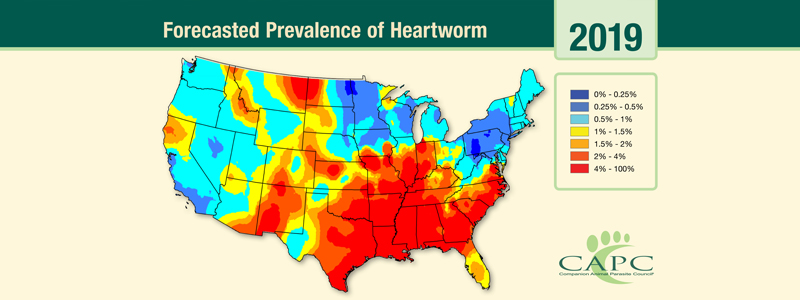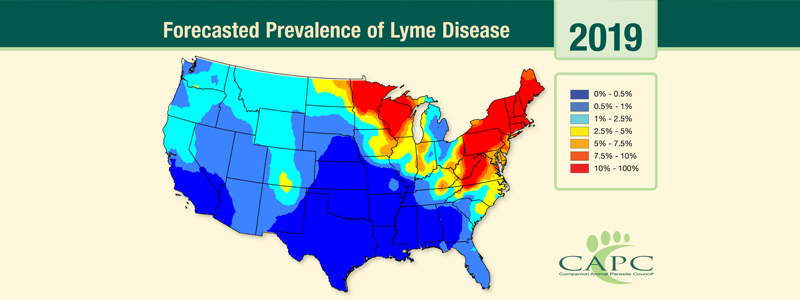BY: SAMANTHA BARTLETT, DVM
In April, the Companion Animal Parasite Council (CAPC) released its annual parasite forecasts. The forecasts are a tool for veterinarians and pet owners to monitor the ever-changing landscape of parasite prevalence across the United States. CAPC predicts an increase in heartworm in the Southeast and Lyme disease in the Atlantic coast and Midwest.
In addition to the yearly forecast maps, users also have access to 30 day forecast maps down to the county level at petdiseasealerts.org. CAPC also provides maps showing the number of pets testing positive for a specific disease by county.
CAPC says the risk of heartworm is increasing both due to the changing weather patterns and to the increasing number of pets that travel on a regular basis. Lyme disease has the potential to spread more widely as the white-tailed deer population grows and infected ticks are disseminated by migratory birds in to the Appalachians, Midwest (specifically Wisconsin and Minnesota) and along the Atlantic coast.
Although heartworm and Lyme disease are areas of focus, predictions about other vector-borne diseases are also concerning. CAPC predicts that the incidence of Anaplasmosis will be stable, but Minnesota may see a higher incidence than normal. Ehrlichiosis incidences are expected to increase throughout south central United States. Oklahoma, Arkansas and Missouri are expected to see the biggest increases in cases.
These trends highlight the need for pet owners to continue preventive care and testing. CAPC strongly urges pet owners to get yearly testing for heartworm disease as well as year-round prevention in at-risk regions. CAPC also stresses the need for protection of pets from ticks in regions where ticks are prevalent. Depending on risk, Lyme vaccines may also be indicated particularly if pets are living or traveling in areas of high incidence. More details about prevention, treatment and forecast maps can be found at capcvet.org.













